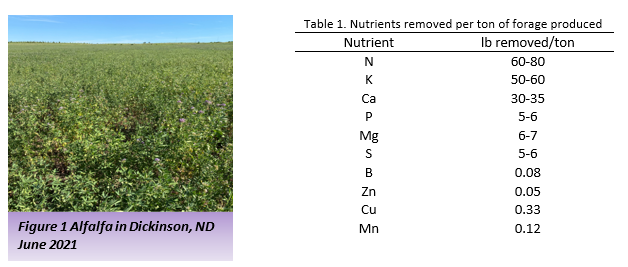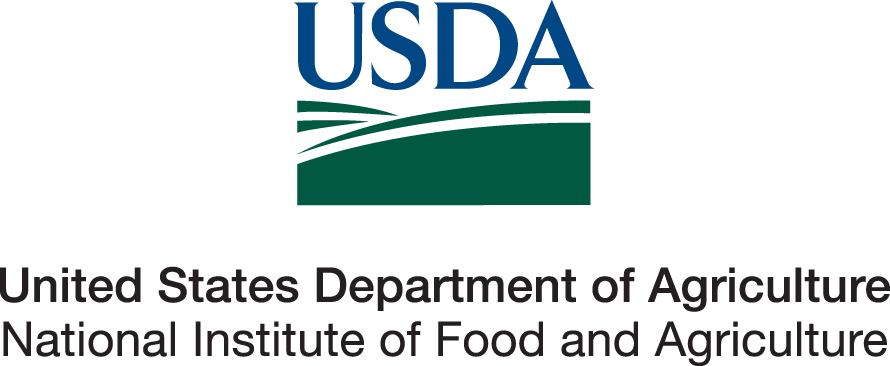Things to Consider when Managing Alfalfa from Now On (06/24/21)
When moisture is the main limiting factor, nutrient levels aren’t going to make much of a difference to crop yield. When in a drought one can feel helpless in coming up with strategies to better manage the crop. Forages have been impacted the most by the drought this year and there really isn’t anything that can be done now to improve the growth of perennial forages. Some may have noticed that certain producers in their region have better forage and alfalfa stands than others. While moisture is definitely an important factor here, so is management. While alfalfa has the potential to fix nitrogen, other nutrients are not being provided and with each cutting, nutrients are being removed. Phosphorus, sulfur, and (if soil tests indicate) potassium fertilization are essential to receiving optimal returns from alfalfa and are often limiting factors in production in ND. As the stand continues past 5 years, N fixation and productivity decreases. For older stands it is recommended to switch to an annual forage crop for a year and then reseed the following year.

Along with stand integrity and fertility, there are soil factors that can greatly impact water uptake and N fixation, including salinity and soil acidity. If the pH is below 5.3 alfalfa roots will be stunted and rhizobia growth will be reduced. Liming may be in your future management decisions. Remember to sample zones at a 0-3” and 3-6” depth for pH if surface acidity is a concern in reduced and no-till systems.
For more detailed information on alfalfa nutrient requirements please refer to the Alfalfa Soil Fertility Requirements in North Dakota Soils by Dave Franzen and Marisol Berti https://www.ag.ndsu.edu/publications/crops/alfalfa-soil-fertility-requirements-in-north-dakota-soils.
Extension Cropping Systems Specialist
NDSU Dickinson Research Extension Center


